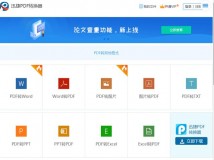

摘要
对于系统管理员来说,每天进行安全漏洞分析和软件更新是每日必需的基本活动。为了避免生产环境中的故障,对系统管理员来说选择不使用由保管理器提供的自动更新选项并执行手动更新非常常见。但是这会导致以下问题的发生:
1、系统管理员必需不断提防NVD(国际漏洞数据库)中所有新的安全漏洞等。对于系统管理员来说
2、如果在服务器上安装了大量的软件,那么监控所有的软件基本是不可能的。
3、通过执行分析来确定被漏洞影响的服务器需要付出高昂的代价。在分析过程中忽略一两个服务器是很正常的。
Vuls是解决以上问题的工具。它具有以下特征:
1、通知系统相关漏洞的用户。
2、通知受影响服务器的用户。
3、实现漏洞自动化检测以防止检查。
4、在使用CRON等的日常基础上生成报告来管理漏洞。

主要特点
1、在Linux服务器上扫描安全漏洞
1.1、支持Ubuntu,Debian,CentOS,Amazon Linux,RHEL ;
1.2、支持Cloud,on-premise,Docker;
2、系统包管理器中不包括扫描中间设备
2.1、针对漏洞的扫描中间设备、程序语言库和框架;
2.2、在CPE中注册支持软件;
3、无代理架构
要求用户只在一台通过SSH连接到其他目标服务器的机器上进行设置;
4、配置文件模版的自动生成
使用CIDR服务器设置的自动监测,生成配置文件模版;
5、支持电子邮件和Slack通知(支持日本);
6、扫描结果在附件软件、TUI 查看终端中可见。
Vuls不能做什么?
Vuls不能更新漏洞集合包;
Hello Vuls
本教程将使用vuls带领你扫描localhost中的漏洞。
扫描可以通过以下步骤完成:
1、Launch Amazon Linux Launch Amazon Linux
2、Enable to ssh from localhost 允许来自localhost的ssh
3、Install requirements 安装需要的程序
4、Deploy go-cve-dictionary 部署 go-cve-dictionary
5、Deploy Vuls 部署 Vuls
6、Configuration 配置
7、Prepare 准备
8、Scan 扫描
9、TUI(Terminal-Based User Interface) TUI(基于终端的用户交互)
第一步. Launch Amazon Linux
1、我们在这个例子中使用的是旧的AMI(amzn-ami-hvm-2015.09.1.x86_64-gp2 – ami-383c1956)
2、实例大小:t2.medium
2.1、第一次使用时,t2.medium和AMI用于从NVD(大约需要2.3GB容量)fetch数据。
2.2、你可以在之后初始化数据fetch之后转换到t2.nano。
3、把下面内容添加到云的初始化中以避免在第一次launch时自动更新。
Q:我在第一次launch时如何对重要安全更新禁用自动安装?
#cloud-config
repo_upgrade: none
第二步. SSH 设置
需要ssh到自己。
创建一个密钥对,然后对验证密钥追加公钥:
$ ssh-keygen -t rsa
$ cat ~/.ssh/id_rsa.pub >> ~/.ssh/authorized_keys
$ chmod 600 ~/.ssh/authorized_keys
第三步. 安装要求
Vuls需要下面的包:
1、sqlite
2、git
3、gcc
4、go v1.6
$ ssh ec2-user@52.100.100.100 -i ~/.ssh/private.pem
$ sudo yum -y install sqlite git gcc
$ wget http://storage.googleapis.com/golang/go1.6.linux-amd64.tar.gz
$ sudo tar -C /usr/local -xzf go1.6.linux-amd64.tar.gz
$ mkdir $HOME/go
在/etc/profile.d/goenv.sh中增加这些行:
export GOROOT=/usr/local/go
export GOPATH=$HOME/go
export PATH=$PATH:$GOROOT/bin:$GOPATH/bin
设置操作系统环境:
$ source /etc/profile.d/goenv.sh
第四步. 部署 go-cve-dictionary
$ sudo mkdir /var/log/vuls
$ sudo chown ec2-user /var/log/vuls
$ sudo chmod 700 /var/log/vuls
$ go get github.com/kotakanbe/go-cve-dictionary
把 go-cve-dictionary 开启为服务模式。
第一次时,go-cve-dictionary fetch 来自 NVD 的漏洞数据。
这样耗时约10分钟(在AWS上)。
$ go-cve-dictionary server
... Fetching ...
$ ls -alh cve.sqlite3
-rw-r--r-- 1 ec2-user ec2-user 7.0M Mar 24 13:20 cve.sqlite3
现在我们成功的收集了漏洞数据,然后再次以服务模式开启它。
$ go-cve-dictionary server
[Mar 24 15:21:55] INFO Opening DB. datafile: /home/ec2-user/cve.sqlite3
[Mar 24 15:21:55] INFO Migrating DB
[Mar 24 15:21:56] INFO Starting HTTP Sever...
[Mar 24 15:21:56] INFO Listening on 127.0.0.1:1323
第五步. 部署 vuls
Launch一个新的终端,SSH到ec2实例。
$ go get github.com/future-architect/vuls
第六步. 配置
创建一个配置文件(TOML 格式)
$ cat config.toml
[servers]
[servers.172-31-4-82]
host = "172.31.4.82"
port = "22"
user = "ec2-user"
keyPath = "/home/ec2-user/.ssh/id_rsa"
第七步. 为vuls设置目标服务器
$ vuls prepare
第八步. 开始扫描
$ vuls scan
INFO[0000] Begin scanning (config: /home/ec2-user/config.toml)
... snip ...
172-31-4-82 (amazon 2015.09)
============================
CVE-2016-0494 10.0 Unspecified vulnerability in the Java SE and Java SE Embedded components in Oracle
Java SE 6u105, 7u91, and 8u66 and Java SE Embedded 8u65 allows remote attackers to
affect confidentiality, integrity, and availability via unknown vectors related to
2D.
... snip ...
CVE-2016-0494
-------------
Score 10.0 (High)
Vector (AV:N/AC:L/Au:N/C:C/I:C/A:C)
Summary Unspecified vulnerability in the Java SE and Java SE Embedded components in OracleJava SE 6u105,
7u91, and 8u66 and Java SE Embedded 8u65 allows remote attackers to affect confidentiality,
integrity, and availability via unknown vectors related to 2D.
NVD http://web.nvd.nist.gov/view/vuln/detail?vulnId=CVE-2016-0494
MITRE http://cve.mitre.org/cgi-bin/cvename.cgi?name=CVE-2016-0494
CVE Details http://www.cvedetails.com/cve/CVE-2016-0494
CVSS Claculator http://nvd.nist.gov/cvss/v2-calculator?name=CVE-2016-0494&vector=(AV:N/AC:L/Au:N/C:C/I:C/A:C)
RHEL-CVE http://access.redhat.com/security/cve/CVE-2016-0494
ALAS-2016-643 http://alas.aws.amazon.com/ALAS-2016-643.html
Package/CPE java-1.7.0-openjdk-1.7.0.91-2.6.2.2.63.amzn1 -> java-1.7.0-openjdk-1:1.7.0.95-2.6.4.0.65.amzn1
第九步. TUI
Vuls拥有基于终端的用户交互来查看扫描结果。
$ vuls tui

体系架构

go-cve-dictionary
从 NVD,JVN(日本)fetch漏洞信息,然后插入SQLite。
Vuls
1、在服务器上扫描漏洞并创建CVE ID列表;
2、为了获得监测到的CVE更多详细信息,发送HTTP请求到go-cve-dictionary;
3、通过Slack,Email发送报告;
4、系统操作员可以通过终端查看最近的报告;
用例
扫描所有服务器

扫描单个服务器
负载均衡下使用相同配置的 Web/app 服务器

支持操作系统 Distribution Release Ubuntu 12, 14, 16 Debian 7, 8 RHEL 4, 5, 6, 7 CentOS 5, 6, 7 Amazon Linux All 用法:自动发现服务器
发现子命令发现CIDR范围中特定的活跃服务器,然后打印配置文件(TOML格式)到终端。
$ vuls discover -help
discover:
discover 192.168.0.0/24
例如:
$ vuls discover 172.31.4.0/24
# Create config.toml using below and then ./vuls --config=/path/to/config.toml
[slack]
hookURL = "http://hooks.slack.com/services/abc123/defghijklmnopqrstuvwxyz"
channel = "#channel-name"
#channel = "#{servername}"
iconEmoji = ":ghost:"
authUser = "username"
notifyUsers = ["@username"]
[mail]
smtpAddr = "smtp.gmail.com"
smtpPort = 465
user = "username"
password = "password"
from = "from@address.com"
to = ["to@address.com"]
cc = ["cc@address.com"]
subjectPrefix = "[vuls]"
[default]
#port = "22"
#user = "username"
#password = "password"
#keyPath = "/home/username/.ssh/id_rsa"
#keyPassword = "password"
#user = "root"
#cpeNames = [
# "cpe:/a:rubyonrails:ruby_on_rails:4.2.1",
#]
你可以使用此模版进行自定义配置
配置
Slack部分
1、hookURL:进入到webhook的URL
2、通道:通道名称
如果你设置 #{servername} 到通道,该报告将呗发送到 #servername 通道。
在下面的例子中,该报告将被发送到 #server1 和 #server2 中。
确定在扫描前创建这些通道。
[slack]
channel = "#{servername}"
...snip...
[servers]
[servers.server1]
[servers.server2]
host = "172.31.4.83"
...snip...
3、iconEmoji:emoji
4、authUser:slack团队的用户名
5、notifyUsers:Slack 用户名列表以发送 Slack 通知。如果你设置["@foo", "@bar"]称notifyUsers,@foo @bar将被纳入文本中。
所以 @foo,@bar 可以在手机上接受到推送到通知。
邮件部分
from = "from@address.com"
默认部分
如果没有特别指定,则使用默认部分。
服务器部分
你可以在默认部分覆盖默认值。
Vuls支持多种SSH身份验证方法:
1、SSH 代理
2、SSH 公钥验证(使用密码、空密码)
3、密码验证
使用:准备
准备在每台服务器上安装包需要的子命令。
Distribution Release Requirements Ubuntu 12, 14, 16 - Debian 7, 8 apptitude CentOS 5 yum-plugin-security, yum-changelog CentOS 6, 7 yum-plugin-security, yum-plugin-changelog Amazon All - RHEL 4, 5, 6, 7 -
$ vuls prepare -help
prepare:
prepare [-config=/path/to/config.toml] [-debug]
-config string
/path/to/toml (default "$PWD/config.toml")
-debug
debug mode
-use-unattended-upgrades
[Deprecated] For Ubuntu, install unattended-upgrades
使用:扫描
$ vuls scan -help
scan:
scan
[-lang=en|ja]
[-config=/path/to/config.toml]
[-dbpath=/path/to/vuls.sqlite3]
[-cve-dictionary-url=http://127.0.0.1:1323]
[-cvss-over=7]
[-report-slack]
[-report-mail]
[-http-proxy=http://192.168.0.1:8080]
[-debug]
[-debug-sql]
-cve-dictionary-url string
http://CVE.Dictionary (default "http://127.0.0.1:1323")
-cvss-over float
-cvss-over=6.5 means reporting CVSS Score 6.5 and over (default: 0 (means report all))
-dbpath string
/path/to/sqlite3 (default "$PWD/vuls.sqlite3")
-debug-sql
SQL debug mode
-http-proxy string
http://proxy-url:port (default: empty)
-lang string
[en|ja] (default "en")
-report-mail
Email report
-report-slack
Slack report
-use-unattended-upgrades
[Deprecated] For Ubuntu. Scan by unattended-upgrades or not (use apt-get upgrade --dry-run by default)
-use-yum-plugin-security
[Deprecated] For CentOS 5. Scan by yum-plugin-security or not (use yum check-update by default)
例子
在扫描前运行 go-cve-dictionary作为服务模式:
$ go-cve-dictionary server
扫描配置文件中定义的所有服务器:
$ vuls scan --report-slack --report-mail --cvss-over=7
使用这条样本命令可以:
1、扫描配置文件中定义的所有服务器;
2、向 slack 和 email 中发送扫描结果;
3、只报告CVSS分数超过7的CVE;
4、向终端打印扫描结果;
扫描特定的服务器
$ vuls scan server1 server2
使用这条命令可以:
1、只扫描2个服务器(sever1,sever2);
2、向终端打印扫描结果;
使用:扫描非系统包的漏洞
你自己监测你编译的漏洞是可能的,比如在CPE中注册的语言库盒框架等。
1、如何通过软件名搜索CPE名
NVD:搜索 Common Platform Emumerations(CPE)
检查CPE命名结构:2.2
2、配置
为检测Rails v4.2.1上的Ruby漏洞,cpeNames需要在服务器部分中被设置:
keyPath = "/home/username/.ssh/id_rsa"
cpeNames = [
"cpe:/a:rubyonrails:ruby_on_rails:4.2.1",
]
使用:更新NVD数据
$ go-cve-dictionary fetchnvd -h
fetchnvd:
fetchnvd
[-last2y]
[-dbpath=/path/to/cve.sqlite3]
/path/to/sqlite3 (default "$PWD/cve.sqlite3")
-last2y
Refresh NVD data in the last two years.
在整个时期fetch数据:
$ go-cve-dictionary fetchnvd -entire
在最后两年fetch数据:
$ go-cve-dictionary fetchnvd -last2y
Misc
1、HTTP代理支持
如果你的系统使用了HTTP代理,你必须指定 –http-proxy选项。
2、如何守护进程 go-cve-dictionary
使用 Systemd,Upstart 或 supervisord,daemontools…
3、如何西东更新漏洞数据。使用作业调度器 Cron(带 -last2y 选项)。
4、如何交叉编译
$ cd /path/to/your/local-git-reporsitory/vuls
$ GOOS=linux GOARCH=amd64 go build -o vuls.amd64
5、日志
日志写在 /var/log/vuls/下。
6、调试
运行 –debug, –sql-debug选项进行调试。
7、调整打开文件限制
Riak文档是很棒的选择。
Windows
使用微软Baseline安全分析器。MBSA
,












